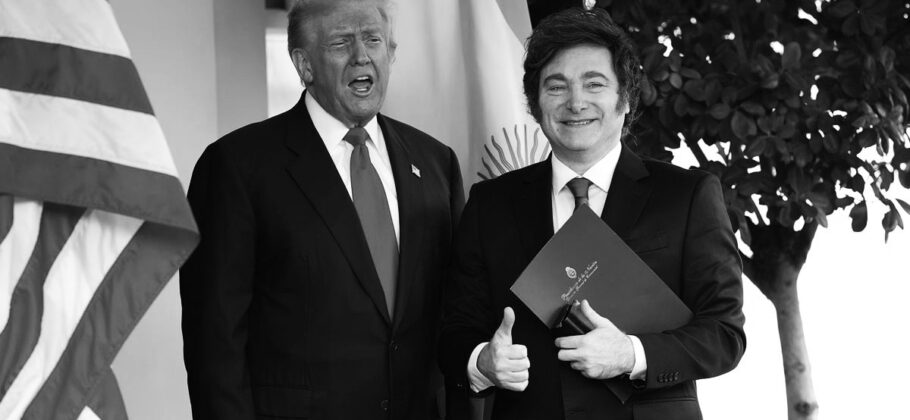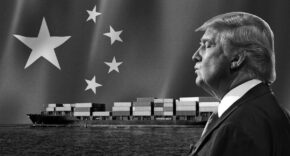President Donald Trump’s administration has struck a landmark agreement with Argentina that aims to stabilize the country’s economy, counter China’s growing influence, and secure vital access to South American resources. The move represents a sharp pivot toward Latin America, a region long neglected by U.S. policymakers and increasingly courted by Beijing.
A $40 Billion Lifeline and a Strategic Partnership
At the heart of the plan is a $40 billion rescue package, split between a $20 billion U.S. Treasury currency swap and a $20 billion bank-led debt facility. The deal, negotiated between Treasury Secretary Scott Bessent and Argentina’s economy minister Luis Caputo, is designed to shore up Argentina’s battered peso and prevent economic collapse.
The U.S. funds will allow Argentina to buy back its own currency, lifting its value and easing inflation pressures before critical elections. As Bessent explained, “It’s hope for the future. With the bridge the U.S. is giving them, Argentina can be great again.”
For Washington, the deal isn’t just economic—it’s strategic. Argentina’s President Javier Milei has aligned closely with Trump, embracing pro-market reforms and opposing socialist regimes in the region. By helping Milei, Trump is strengthening a libertarian ally who can serve as a regional counterweight to China’s influence.
Curbing China’s Grip on Argentina
China has become Argentina’s second-largest trading partner and its top buyer of agricultural exports. Beijing has poured billions into Argentina’s mining, telecom, and nuclear sectors—investments that give it leverage over key resources such as lithium and uranium.
Trump’s team wants to change that. The U.S. has pushed Argentina to open its uranium sector to American firms and prioritize U.S. companies for infrastructure and telecommunications projects. “Stabilizing Argentina is ‘America First,’” a Treasury spokesman said, adding that a strong Argentina helps “anchor a prosperous Western Hemisphere.”
The goal is clear: box China out of Latin America’s economic core. As Adm. Alvin Holsey of U.S. Southern Command warned Congress earlier this year, China is “assailing U.S. interests from all directions” in the region. If Trump succeeds, the U.S. would regain ground in a hemisphere where Chinese banks and builders have become dominant.
The Beef Import Controversy
Trump’s plan to import Argentine beef has stirred controversy among U.S. farmers. Facing the smallest cattle herd since the 1950s and soaring consumer prices, the administration decided to bring in Argentine beef to lower costs at grocery stores. Trump defended the move, writing that American ranchers “need to get their prices down” and reminding them that his tariffs on Brazil had protected their market for years.
Agriculture Secretary Brooke Rollins argued that expanding imports was part of a broader plan to stabilize food prices while also investing in domestic production. “The bigger supply—even aligned with a bigger demand—is going to allow prices to come down but also sustain a vital industry for ranchers to survive,” she said.
Still, many ranchers remain unconvinced. The National Cattlemen’s Beef Association warned the move “creates chaos” for producers, while Senator Deb Fischer of Nebraska said the policy “pulls the rug out” from ranchers who are finally recovering.
Soybean Farmers’ Unease
U.S. soybean farmers are also frustrated. After Trump’s tariffs on China, Beijing shifted its soybean imports to Argentina and Brazil, leaving American producers with mounting losses. Critics like Senator Chuck Grassley questioned why Washington would “bail out Argentina while they take American soybean producers’ biggest market.”
Trump brushed off the criticism, insisting the bailout was necessary. “Argentina is fighting for its life,” he said. “They have no money. They have no anything.” Treasury officials say the long-term gain outweighs the short-term optics: keeping Argentina solvent ensures China can’t use its economic distress to deepen its foothold.
Risks and Rewards
The U.S. plan carries financial risks. Argentina’s history of debt defaults raises concerns that the U.S. could be left holding billions in nearly worthless pesos. As analyst Steve Kamin warned, “There’s repayment risk—we’re not going to get repaid everything we’re owed.”
But Trump sees the gamble as worthwhile. The Exchange Stabilization Fund, which covers foreign currency interventions, shields taxpayers from direct exposure. More importantly, the investment could realign an entire continent back toward the U.S. and away from China’s orbit.
A Smart Bet on the Hemisphere
For decades, Washington has taken Latin America for granted, allowing China to buy influence through ports, railways, and minerals. Trump’s Argentina strategy signals a shift—using financial strength and political ties to reclaim the region’s allegiance.
By stabilizing Milei’s government, supporting Argentina’s currency, and reasserting U.S. influence, Trump is making a calculated bet: that a strong, pro-American Argentina can serve as the cornerstone of a new Western Hemisphere alignment. Critics call it risky. Supporters call it overdue. Either way, it marks a return of U.S. attention to its own backyard—and a message to Beijing that Latin America is once again America’s sphere of influence.
FAM Editor: This is a great move by Trump, China has made a lot of headway in Latin America and we do not want them to turn those countries against us.
Normally, as a former farmboy, I would want to support beef farmers in the U.S. But have you seen beef prices? I’m somehow not feeling sorry for our beef farmers at the moment.





